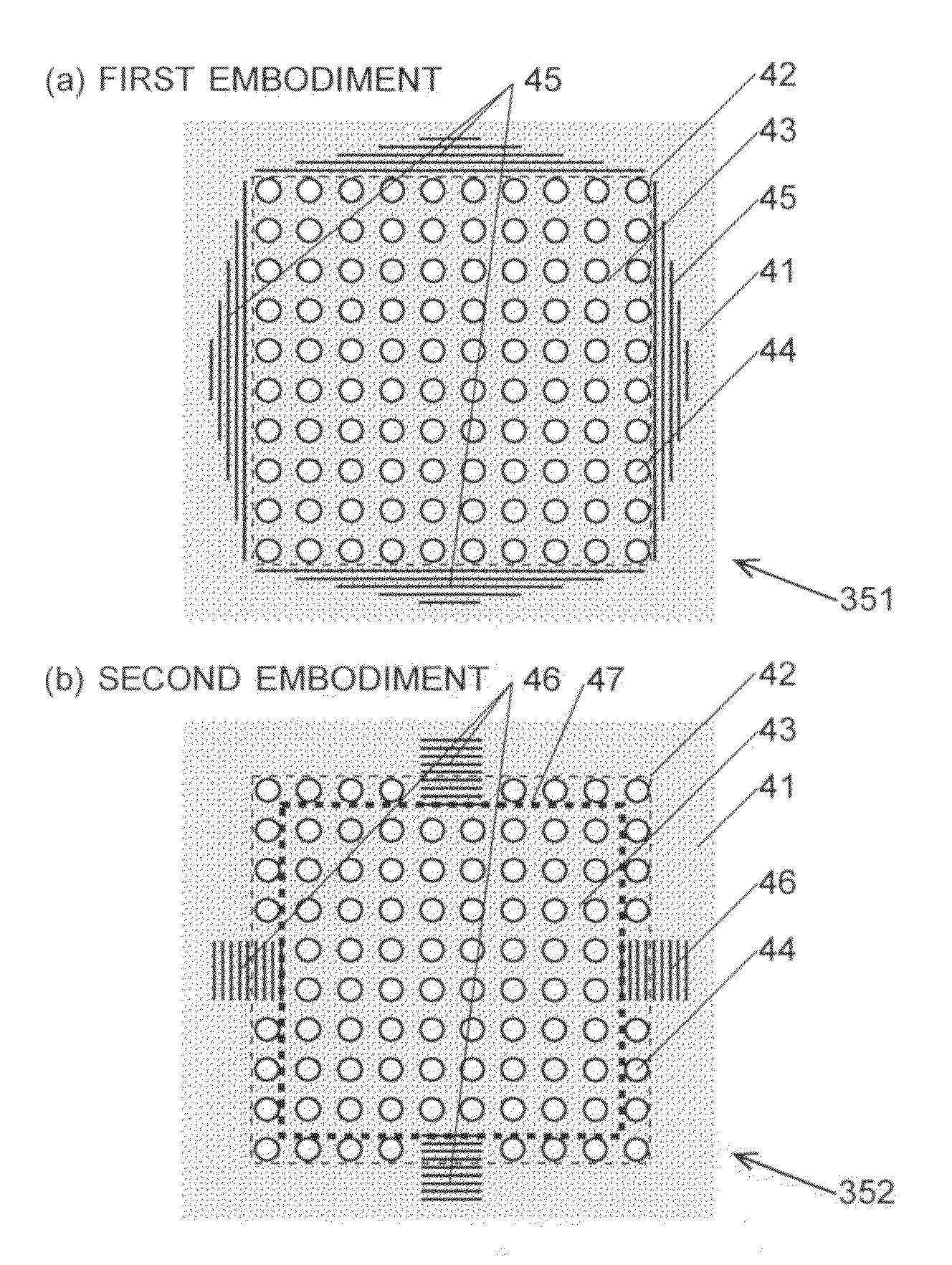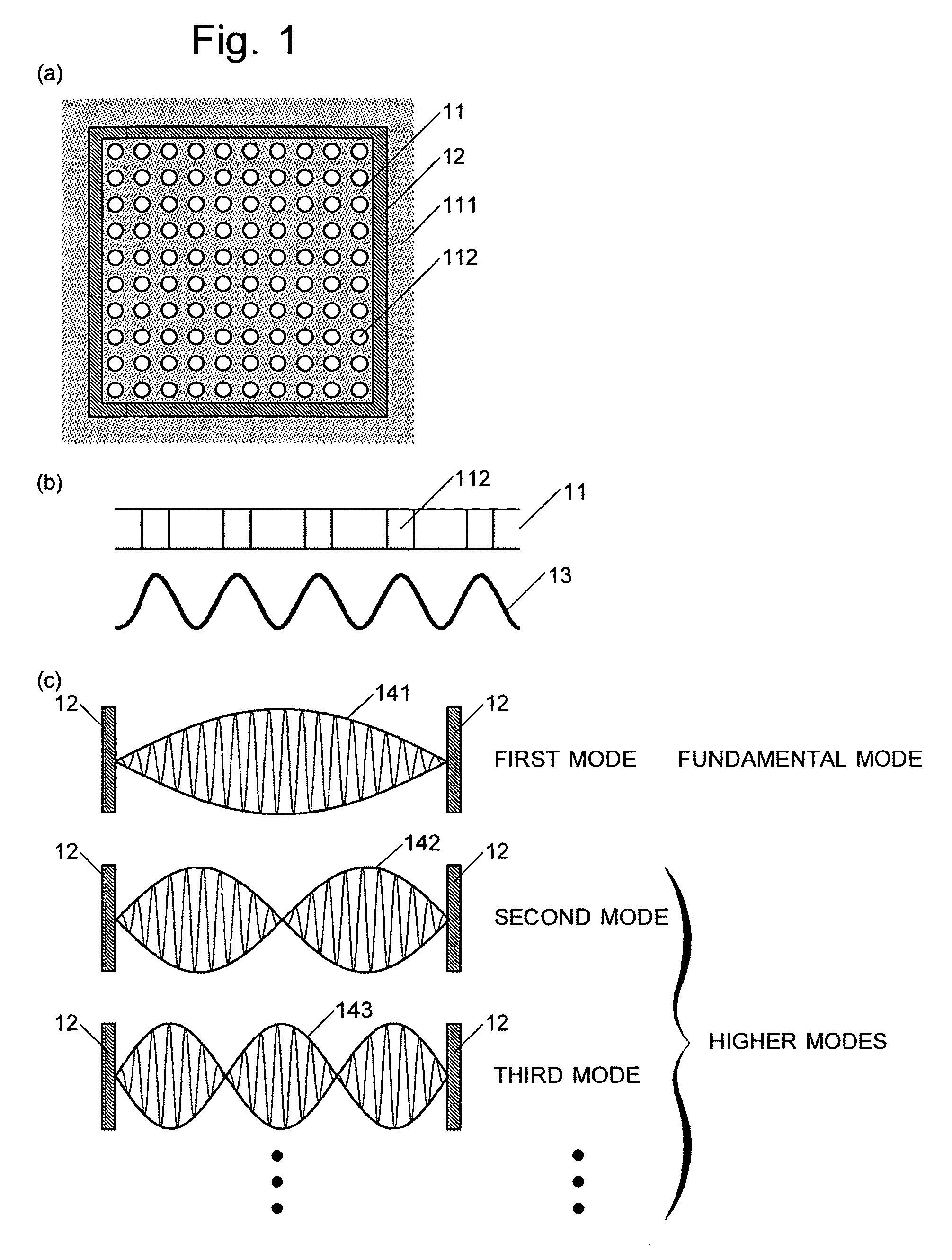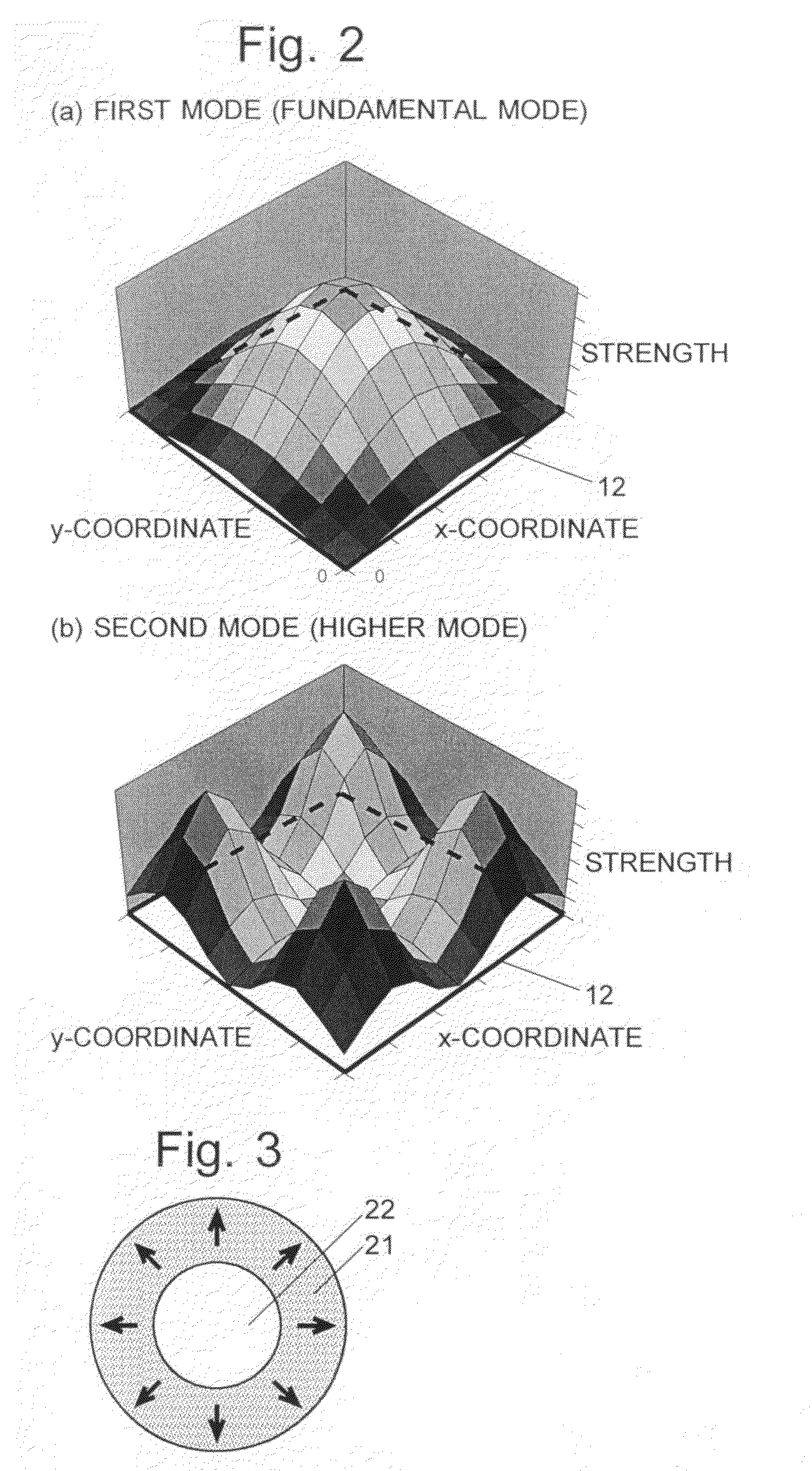Two-dimensional photonic crystal surface emitting laser light source
a photonic crystal surface and laser light source technology, applied in lasers, optical beam sources, semiconductor lasers, etc., can solve the problems of reducing the lasing efficiency, generating heat, leaking light is absorbed by the active layer, etc., and achieve the effect of improving the light use efficiency
- Summary
- Abstract
- Description
- Claims
- Application Information
AI Technical Summary
Benefits of technology
Problems solved by technology
Method used
Image
Examples
embodiments
(1) Embodiment of Surface Emitting Laser According to First Aspect of Invention
[0084]An embodiment of the surface emitting laser according to the first aspect of the present invention is hereinafter described with reference to FIGS. 4 to 11.
[0085]FIG. 4 is a perspective view of the laser light source in the present embodiment. This laser light source includes a substrate 31 made of an n-type semiconductor of gallium arsenide (GaAs), on which an active layer 33 made of indium gallium arsenide (InGaAs) / gallium arsenide (GaAs) and having multiple-quantum wells (MQW) is located, with a cladding layer 321 made of an n-type semiconductor of aluminum gallium arsenide (AlGaAs) in between. Provided on this active layer 33 is a two-dimensional photonic crystal layer 35, with a carrier-blocking layer 34 made of AlGaAs in between. The structure of the two-dimensional photonic crystal layer 35 will be later described. On this two-dimensional photonic crystal layer 35, a cladding layer 322 of p-A...
PUM
 Login to View More
Login to View More Abstract
Description
Claims
Application Information
 Login to View More
Login to View More - R&D
- Intellectual Property
- Life Sciences
- Materials
- Tech Scout
- Unparalleled Data Quality
- Higher Quality Content
- 60% Fewer Hallucinations
Browse by: Latest US Patents, China's latest patents, Technical Efficacy Thesaurus, Application Domain, Technology Topic, Popular Technical Reports.
© 2025 PatSnap. All rights reserved.Legal|Privacy policy|Modern Slavery Act Transparency Statement|Sitemap|About US| Contact US: help@patsnap.com



